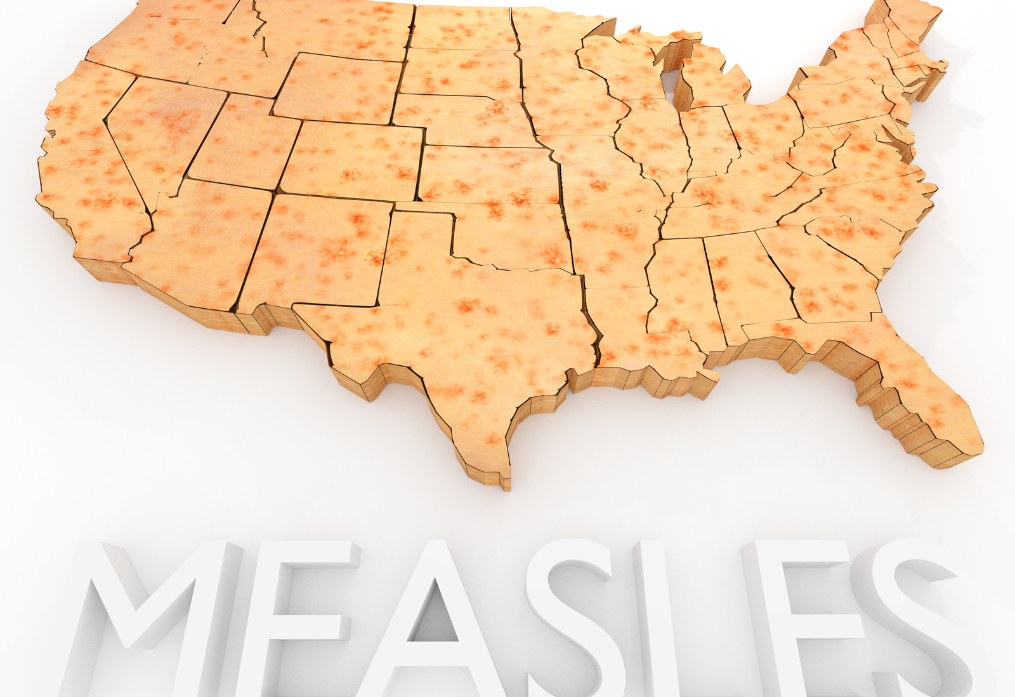The measles outbreak in 2024 continues to pose a concern, despite its elimination in the US in 2000. It was first reported in the country in 1765, leading to around 6,000 deaths annually by the early 20th century. The introduction of the measles vaccine in 1963 and subsequent widespread vaccination efforts played a pivotal role in its elimination.
In 2000, health officials declared the United States measles-free, marking a significant milestone in public health. This achievement meant that the disease was no longer constantly present in the country. However, the threat persists as travelers can still introduce measles into the US.
Measles outbreak 2024: A stark reminder that infectious diseases still pose a threat. With cases on the rise, now is the time to act. Don’t wait for the virus to knock on your door – educate yourself, get vaccinated, and encourage others to do so as well. By taking proactive measures, we can stop the spread and protect vulnerable members of our communities. Join the fight against measles today.

As of late this evening, the Centers for Disease Control and Prevention (CDC) have reported at least 45 measles cases across 17 states (Arizona, California, Florida, Georgia, Illinois, Indiana, Louisiana, Maryland, Michigan, Minnesota, Missouri, New Jersey, New York City, Ohio, Pennsylvania, Virginia and Washington) and is expected to spread to other states. If you have measles, it’s crucial to quarantine for four days after developing the rash to prevent spreading the virus. Quarantine regulations may vary by state.
In the US, measles cases fluctuate yearly. Take proactive steps: Educate yourself, get vaccinated, and encourage others to do the same before the virus strikes. In contrast, 2022 saw 121 cases, and 2023 recorded 58 cases across 20 jurisdictions.
Clinical guidance emphasizes considering measles in patients presenting with fever and rash, especially after international travel or exposure to infected individuals. Diagnosis involves various methods, including RT-PCR and antibody tests.
The highest risk groups for measles include unvaccinated individuals, those with incomplete vaccination, and travelers from affected areas. Infants, elderly individuals, pregnant women, and immunocompromised individuals face severe complications.
Measles can lead to serious illnesses like ear infections, pneumonia, and encephalitis, and even death. The virus is highly contagious and transmitted through respiratory routes.
Preventive measures include vaccination, with children receiving the MMR vaccine at 12-15 months and again between 4-6 years. Adults born after 1957 without vaccination records should receive vaccinations.
Exposure to measles prompts the need for post-exposure prophylaxis or immunoglobulin within specific time frames. Check with healthcare providers or local health departments for guidance on vaccination and exposure.
The recent case at a California hospital highlights the risk of measles transmission, urging individuals to review their immunization records and monitor for symptoms. Measles outbreaks underscore the importance of vaccination and public health initiatives to prevent further spread.
Summation
To prevent the influx of travelers bringing measles back into the country, authorities must implement robust measures. Before entering the country, travelers should undergo stringent testing protocols to ensure they are not carriers of the virus. This testing should include thorough screenings for measles immunity and, if necessary, vaccination requirements. Additionally, authorities need to adopt uniform and universal measures across the country to prevent the spread of measles. This includes standardized vaccination protocols, comprehensive public health education campaigns, and enhanced surveillance systems to monitor and track outbreaks effectively. By implementing these measures, we can collectively work towards preventing the resurgence of measles and safeguarding public health on a national level.








